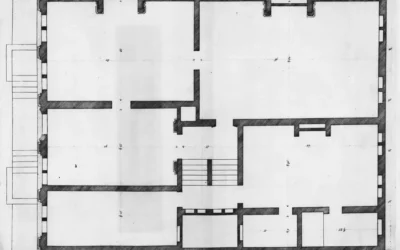The National Fire Protection Association (NFPA) is a self-funded nonprofit organization devoted to eliminating death, injury, property, and economic loss due to fire, electrical, and related hazards. They develop codes and standards for buildings to contribute to the safety of the general public.
The difference between NFPA codes and standards is that the codes explain what must be done, and the standards go into detail about how to do it.
In this article, we’ll explain the nuances between codes and standards, including how and when you need to comply with both. Building Maps can help your organization maintain code compliance to the latest NFPA requirements with our fire safety mapping services.
NFPA Codes and Standards Explained
A “code” is defined by the NFPA as a set of rules that knowledgeable people recommend for others to follow. A “standard” is an elaboration of a code. It is more detailed than a code, and is defined by the NFPA as “the nuts and bolts of meeting a code.”
Differences between Codes and Standards
The difference between a code and a standard is that a code tells you what is required, and a standard gives specifics on how to meet each particular code requirement. For example, NFPA code requires that most buildings must have a fire alarm system. The standards related to that code then describe what kind of system should be installed and how it must operate.
It is worth noting that an NFPA code is not a law, but is something that has been adopted as law by a local jurisdiction, or could one day be adopted into law. This begs the question: which NPFA codes does your organization need to comply with? Who is enforcing NFPA codes?
NFPA Legal Jurisdiction
Technically, the NFPA has no legal jurisdiction or means of code enforcement. However, many authorities having jurisdiction (AHJs) adopt NFPA codes and standards as legal requirements.
An AHJ is an organization, office, or individual that is responsible for enforcing the NFPA legal requirements. This could be the state, county, or city, but this could also be the local fire marshal, building inspector, or health department representative.
One large regulatory agency that has adopted many NFPA codes is OSHA. The Occupational Safety and Health Administration has implemented NFPA codes into their standards, making them a requirement for many organizations across the USA.
Even if NFPA codes are not legally required for your organization, they could easily be adopted as law in the future, which makes it a good idea to design for compliance now rather than react to changes later. Since these codes are designed with human safety in mind, compliance is always beneficial to an organization that prioritizes a safe environment.
If The NFPA Codes are Law, How do Standards Apply?
We’ve talked a lot about codes being adopted as legal requirements, so now let’s detail how that affects the information listed in the standards.
If you think of the standards as a set of instructions to maintain the requirements of the code, you can see that it’s a good idea to follow the appropriate standards for the NFPA codes that are legal requirements. If your organization is inspected for code compliance, it is likely that the inspector will use the standards as their inspection guidelines.
However, the standards are not legal requirements unless they are specifically referenced by the NFPA code. For instance, the code may say “Where required, the automatic fire sprinkler system shall be installed in accordance with NFPA 13, Standard for the Installation of Sprinkler Systems.”
In this case, the referenced standard has now become a legal requirement that is enforceable by the AHJ.
Plan. Protect. Save Lives.
Building Maps is the industry leader in fire evacuation and security mapping illustration and services. Our illustrators and management are trained in NFPA, ICC, and OSHA code compliance. Every map that we create goes through an in-depth compliance check by Certified Fire Protection Specialists.
More than just code-compliant maps that meet the local AJH requirements, our maps are also clear and easy to read, so that every individual can quickly understand the path to the nearest safe exit during a high-stress emergency.
Contact us to learn more about our services or request a quote on your next mapping project.
More Info




